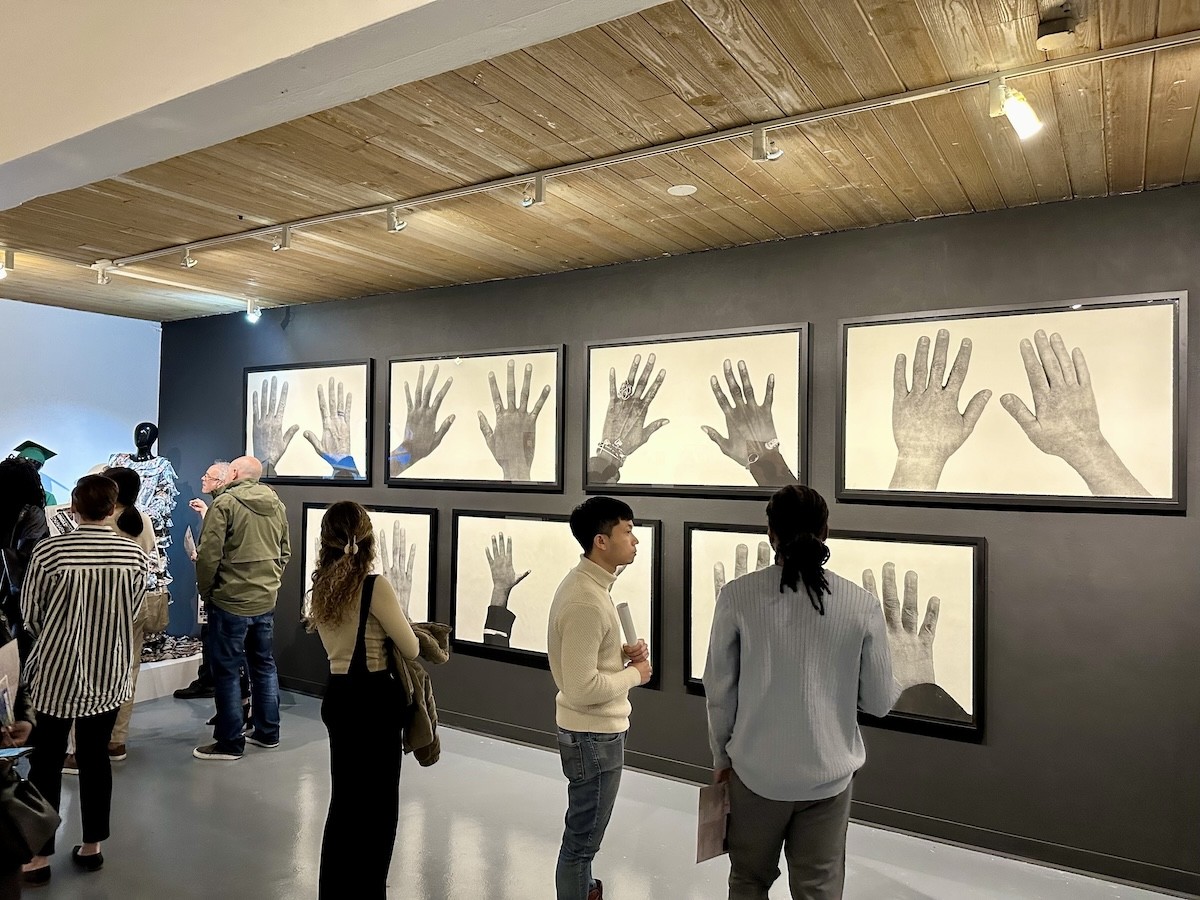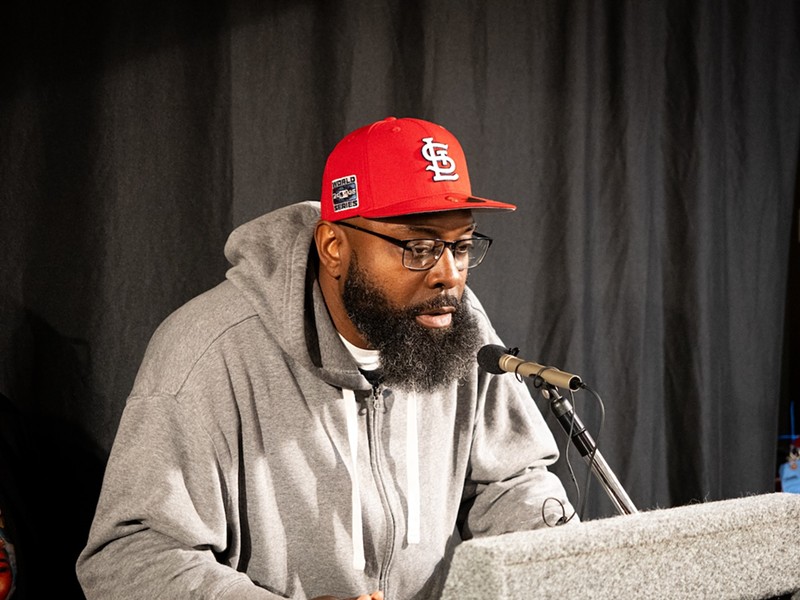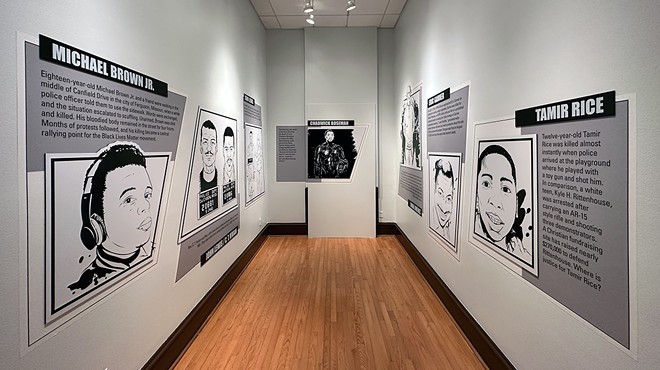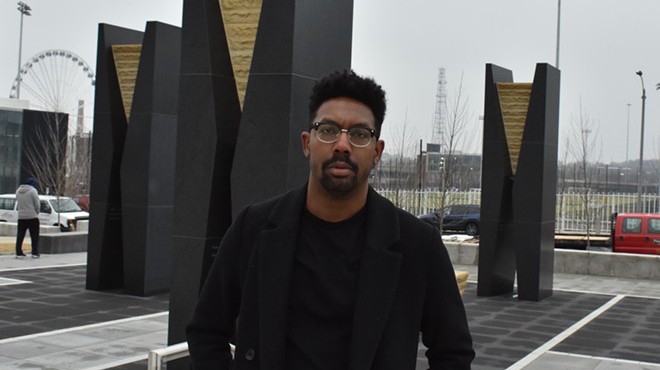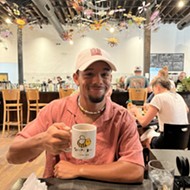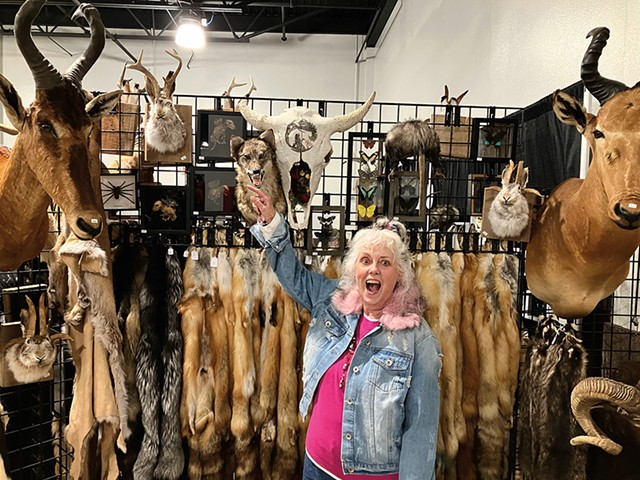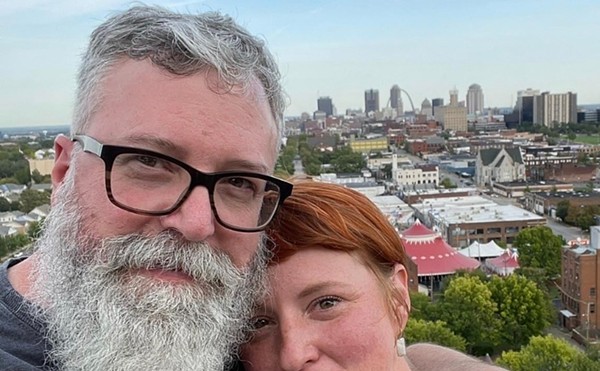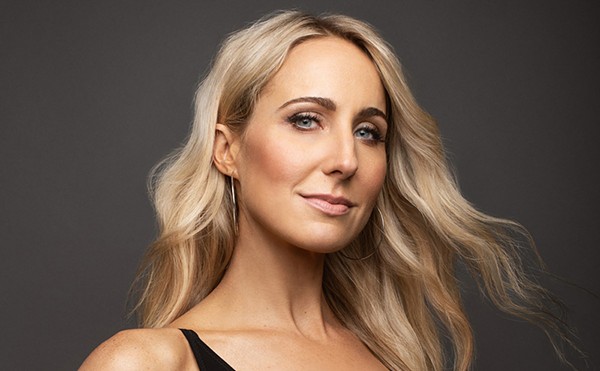Ferguson and Beyond: Artistic Responses to a Decade of Social Upheaval, open now through April 26, is at once a glimpse back in time and a mirror of the present moment. As we approach the 10th anniversary of the Ferguson Uprising, the exhibition urges viewers to contemplate the fatal shooting of Michael Brown Jr. by police officer Darren Wilson and the outpouring of protests and social activism that ensued as a result, both locally and around the world. It asks critical questions: What progress has been made? What work is left to be done?
The gallery is adorned with paintings, photography, sculptures, videos and poetry by artists of color whose deeply personal work is informed by their lived experience. Notable contributors include Damon Davis, Lillian Gardner, Cheeraz Gormon, William Morris, Jon Henry, Yvonne Osei and more.
“Many of the artists were in the streets of Ferguson,” Terri Reilly, Webster professor and co-curator of the exhibition told attendees on Friday. “Their art asks us to reflect and then act.”
Despite the gravity of the evening’s central topic, the atmosphere on opening night crackled with festive energy. Familiar faces exchanged warm embraces, a gentle chorus of “pardon me” punctuated the constant brushing of shoulders, and the soft clink of plastic cups filled with complimentary wine was something like a symphony.
The energy shifted, however, as attendees gathered around the podium for the exhibition’s opening remarks. Every person in the room was eager to hear from two special guests: Michael Brown Jr.’s father, Michael Brown Sr., and stepmother Cal D. Brown.
The Brown family speaks out
When Cal D. Brown stepped up to the podium, a solemn reverence fell over the crowd. The already congested room squeezed tighter as folks vied for a better view. iPhones and cameras emerged to capture the moment, and I, too, edged closer to the front, tape recorder in hand.
“Good evening,” Mrs. Brown said. The crowd echoed her greeting like a congregation at Sunday Mass. “August 1, 2014, Michael Brown, Jr. graduated from high school,” she continued. “He sat in a Chinese restaurant in Ferguson and he said, ‘The world will know my name. I’m going to shake the world. I may have to go away for a while, but I’m gonna come back and heal my city.’”
We know the end of this story all too well. Eight days later, on August 9, 2014, the unarmed 18-year-old was shot and killed after an encounter with Officer Wilson in Ferguson. Mrs. Brown concluded, “When I stand in spaces like this, I’m reminded of the words that he said himself.”
Amidst applause and heartfelt grunts of approval, Michael Brown Sr. took center stage. He spoke about the work he and his wife are doing at the Michael Brown Sr. Chosen For Change Organization, a nonprofit he founded to support grieving families impacted by gun violence and police terror. The Browns are part of a growing number of families who, after losing a loved one to state violence, have decided to turn their pain into purpose by taking on roles as advocates, running foundations in their loved one’s honor, and accompanying other impacted families in establishing communities of healing. But the pain of losing one’s child never truly goes away.
“It’s hard to bounce back after losing your loved one,” Brown Sr. said. “I struggle every day missing Mike. It’s ten years now, and it still feels like the same year everything happened. Personally, I don’t think too much has changed, but we got a whole lot of work to do. I’m standing here telling you I’m gonna stand with the people who want to do the work.”
Brown Sr.’s voice carried conviction born of experience. Though his sincerity was undeniable, it was clear he had delivered retellings of his family’s tragedy hundreds of times before. Perhaps that is what it has taken to get people to listen.
The Brown family’s sentiments underscore the main message of Ferguson and Beyond: that there remains an urgent need for collective action to address the root causes of violence and inequality in our communities. But how is art going to help us get us there?
How art helps us move through Ferguson and beyond
“Through every period of societal turmoil, regardless of place, artists have played a pivotal role in reflecting and shaping public discourse through their work,” Reilly writes in “Ferguson and Beyond: A Collective Undertaking,” an essay accompanying the exhibition. “Their work ignites change, challenges societal norms, fosters a collective consciousness, and asks the viewer to reflect, question, and collectively act against injustice.”
Reilly draws parallels between the artistic community's response to the deaths of Michael Brown Jr. and George Floyd and the historic Black Arts Movement of the 1960s and 1970s. Both movements arose during a time when Black people around the world were engaged in struggles for liberation and equality and sought to promote Black determination and pride through cultural production.
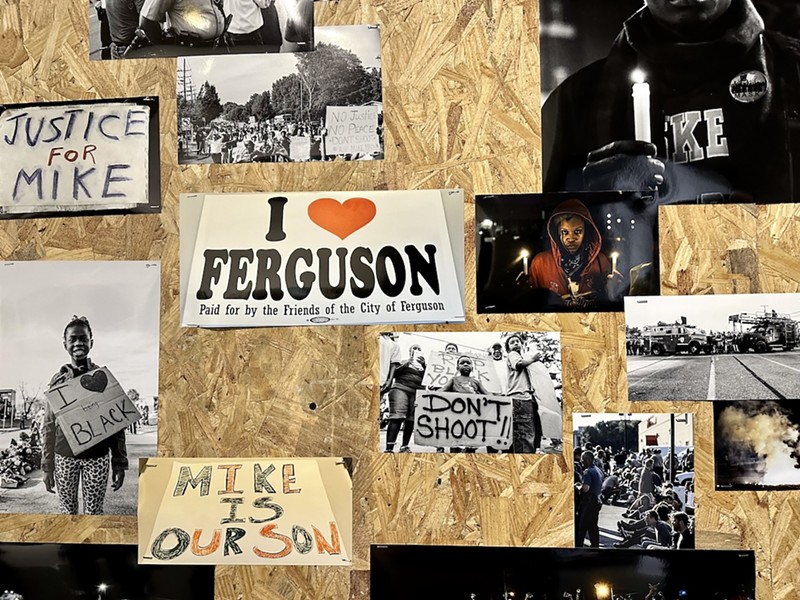
ANGELO VIDAL
A series of photographs from the collection of the Missouri Historical Society and its African American History Initiative offer a glimpse at the events of August 2014.
Damon Davis’ All Hands on Deck, one of the works on display at the exhibition, is a prime example. Created during the 2014 protests, All Hands on Deck comprises photographs of black hands raised in the air, which Davis initially pasted onto boarded-up storefronts along West Florissant Avenue, where they shared space with other protest art. Images of the storefronts were broadcast around the world. Davis’ artwork transformed a signal of surrender (“hands up, don’t shoot”) into one of resistance and solidarity.
“All Hands on Deck was my way of weaponizing art to create a counter-narrative centered on the unity and love I saw every time I went out to protest,” says Davis. “It sought to raise the morale of the protest community to continue the fight.”
Davis and the rest of the artists showcased in Ferguson and Beyond form a collective coalition of people who demand change.
“Hate wants us to stop. Injustice wants us to go home,” Reilly insists. “No. We must collectively act, and the work in this show is asking you to do that.”
Ferguson and Beyond will be open at Webster University’s Cecille R. Hunt Gallery (8342 Big Bend Boulevard) through April 26 and is free to attend. The gallery is open Tuesdays and Thursdays, 10 a.m. tp 5 p.m., Wednesdays 9:30 to 11:30 a.m. and 2 to 5 p.m., and Fridays 2 to 5 p.m. For more info, visit webster.edu/art/hunt-gallery.php.
Subscribe to Riverfront Times newsletters.
Follow us: Apple News | Google News | NewsBreak | Reddit | Instagram | Facebook | Twitter | Or sign up for our RSS Feed

